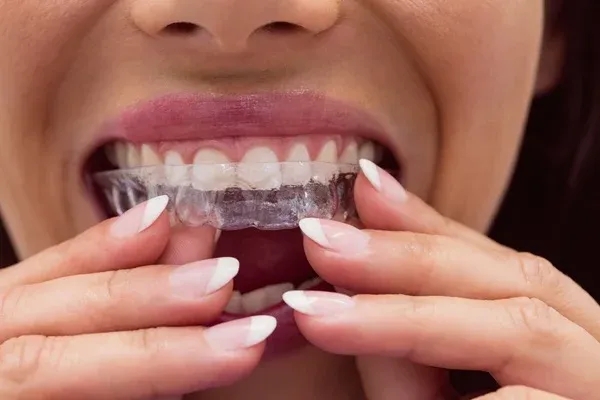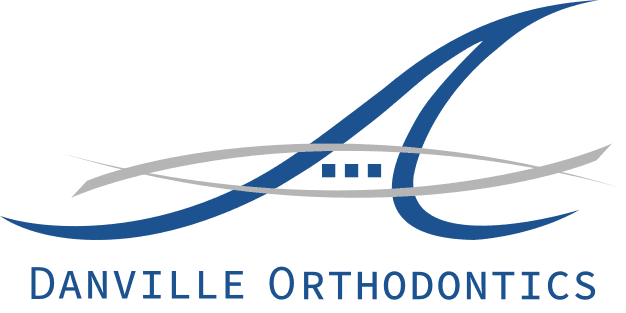Is Invisalign Right for You?
Invisalign might be the perfect solution if you're looking for an alternative to traditional braces. It is a clear aligner system that gently moves your teeth into their proper position while being virtually invisible. But is Invisalign right for you? In this article, we'll explore the benefits and drawbacks of Invisalign to help you make an informed decision.
How does Invisalign work?
Invisalign is a cutting-edge method for aligning teeth. It utilizes a series of personalized, transparent aligners that gradually shift the teeth into their desired positions over time. The standout feature of Invisalign is its transparency, making it an appealing choice for those seeking a less noticeable orthodontic solution.
The Invisalign journey begins with a detailed 3D scan or impression of your teeth, allowing for the creation of a personalized treatment plan. This plan is unique to you and ensures that your teeth are moved into their desired alignment most effectively. Based on this plan, a series of custom clear aligners are crafted to be worn for approximately two weeks each. These aligners gently and strategically pressure specific teeth, gradually guiding them into the desired alignment.

Who is a Good Candidate for Invisalign?
Invisalign has revolutionized orthodontic treatment by offering a discreet, convenient alternative to traditional braces. But who exactly is a suitable candidate for this innovative solution? Let's discuss the key factors that determine candidacy for Invisalign treatment.
- Mild to Moderate Alignment Issues: Invisalign is preferably suited for people with mild to moderate tooth misalignment issues. Invisalign aligners can often provide effective correction, whether you're dealing with overcrowding, gaps between teeth, or minor bite problems.
- Age Considerations: One of Invisalign's advantages is its versatility across age groups. Both teenagers and adults can benefit from Invisalign treatment. However, age-related considerations may come into play, such as the stage of dental development for younger patients.
- Commitment to Treatment: Successful Invisalign treatment requires a commitment from the patient. Candidates must be willing to wear the aligners for the recommended amount of time each day, typically 20 to 22 hours, and adhere to the treatment plan outlined by their orthodontist.
- Compliance with Instructions: Candidates for Invisalign should be capable of following instructions regarding the proper care and maintenance of their aligners. This includes wearing them as directed, removing them when eating or drinking anything other than water, and diligently cleaning them to prevent bacteria buildup.
- Gum and Tooth Health: Good oral health is essential for Invisalign candidates. Healthy gums and teeth free from decay or gum disease are crucial, as the success of Invisalign treatment relies on the health and stability of the teeth and surrounding structures.
- Realistic Expectations: Candidates need realistic expectations about the outcomes of Invisalign treatment. While Invisalign can address many orthodontic issues, it may not suit everyone, especially in severe misalignment or complex bite problems.
Critical Differences Between Invisalign and Traditional Braces
1. Visibility:
Invisalign:
- Virtually invisible due to clear aligners.
- This discreet option may be more suitable for those worried about the appearance of traditional braces.
Traditional Braces:
- Easily noticeable with metal brackets and wires.
- Traditional Braces offer a unique personalization aspect. They come in various colors, allowing you to make a style statement if that's your preference.
2. Comfort:
Invisalign:
- They are generally considered more comfortable as no metal components cause potential irritation.
- Clear aligners are smooth and custom-fitted for minimal discomfort.
Traditional Braces:
- It may cause some discomfort initially as the mouth adjusts to the presence of brackets and wires.
- Brackets may irritate the cheeks or lips, requiring orthodontic wax for relief.
3. Maintenance:
Invisalign:
- Removable for eating, brushing, and flossing, allowing for easy oral hygiene maintenance.
- Regular cleaning of aligners is required to prevent discoloration and maintain transparency.
Traditional Braces:
- Fixed components make cleaning more complex, but advancements like water flossers and special brushes facilitate oral hygiene.
- Dietary restrictions to prevent damage to brackets and wires.
4. Treatment Duration:
Invisalign:
- Treatment duration can vary but is often comparable to traditional braces.
- Compliance with wearing Invisalign aligners as instructed is crucial for achieving timely and effective results. Your commitment plays a significant role in the success of your treatment.
Traditional Braces:
- Treatment may take slightly longer, depending on the case's complexity.
- Regular adjustments are necessary to ensure progress.
5. Cost Considerations:
Invisalign:
- Often perceived as more expensive than traditional braces.
- Costs may vary based on the length and complexity of treatment.
Traditional Braces:
- Generally considered more cost-effective.
- Insurance coverage may impact overall expenses.
Understanding these key differences will empower you to weigh the pros and cons effectively, steering you toward the orthodontic treatment solution that best aligns with your preferences and lifestyle. In the subsequent sections, we'll explore the suitability of each option for different cases and delve into personal considerations to further guide your decision-making process.
Suitability for Different Cases
Selecting the most suitable orthodontic treatment involves considering the unique aspects of your dental condition. Whether you have mild misalignments, more severe orthodontic issues, or specific concerns, understanding Invisalign vs. traditional braces cater to different cases is essential for making an informed decision.
1. Mild Misalignments:
Invisalign:
- Ideal for mild to moderate misalignments.
- Effective in correcting issues like minor crowding or spacing.
Traditional Braces:
- It is equally effective for mild misalignments.
- Provides precise control over tooth movement, addressing various issues.
2. Moderate to Severe Misalignments:
Invisalign:
- Advances in Invisalign technology make it increasingly effective for moderate misalignments.
- It suits many cases but may not be the best choice for severe orthodontic issues.
Traditional Braces:
- Well-suited for moderate to severe misalignments.
- Offers comprehensive control and can handle more complex cases.

3. Specific Orthodontic Issues:
Invisalign:
- Effective for addressing gaps, overcrowding, and specific bite issues.
- It may be unsuitable for cases requiring significant tooth rotation or vertical movement.
Traditional Braces:
- It is particularly effective for cases requiring precise control over tooth movement.
Consultation and Decision-Making
As you navigate the journey towards a straighter smile, a crucial step is seeking professional guidance through a comprehensive orthodontic consultation. This step is pivotal in understanding your needs and receiving expert advice. Here's a guide to the consultation and decision-making process:
- Schedule an Appointment: Consult an experienced orthodontist to schedule a consultation. Ensure the orthodontist has expertise in both Invisalign and traditional braces.
- Diagnostic Evaluation: Get a thorough examination, including X-rays and impressions. Moreover, discuss your dental health history and any specific concerns or goals.
- Treatment Goals: Communicate your goals, whether they involve aesthetics, functionality, or both. It is important to discuss any specific concerns or challenges you anticipate during treatment.
- Lifestyle Considerations: Share information about your daily routine, dietary habits, and participation in sports or other activities. Discuss how treatment may align with your lifestyle and preferences.
- Financial Considerations: Do research about the cost of both Invisalign and traditional braces. Discuss available payment plans, insurance coverage, and potential financing options.
- Review Treatment Plans: Examine the proposed treatment plans for both Invisalign and traditional braces. Consider the estimated treatment duration, appointment frequency, and any required lifestyle adjustments.
- Ask Questions: Seek clarification on any aspects of the procedure plans that are unclear. Inquire about potential challenges and how they can be addressed.
- Consider Preferences: Reflect on the earlier personal considerations, including aesthetics, comfort, and oral hygiene. Consider how each option aligns with your lifestyle and preferences.
- Weigh the Pros and Cons: Evaluate the benefits and drawbacks of both Invisalign and traditional braces. Consider how each aligns with your treatment goals and lifestyle.
- Trust Your Orthodontist: Rely on the expertise and advice of your orthodontist. Consider their recommendations based on your unique case and preferences.
- Commit to Your Choice: Commit to the chosen treatment plan once you've made an informed decision. Understand the importance of compliance for successful results.
When looking to achieve a straighter smile, the decision between Invisalign and traditional braces is a personal one that depends on various factors. Both options have advantages and considerations, and it is essential to understand these differences to make an informed decision that aligns with your preferences, lifestyle, and orthodontic requirements.
Contact your Danville dentist, Dr. Hoss Abar, DDS, MSD, at Danville Orthodontics to learn more about Invisalign.
Resource:
Invisalign: Evolution of Braces
*Neither this nor any other content in this media is meant to prescribe, recommend, or prevent any treatment or procedure. We highly suggest that you get the advice of a qualified dentist or other medical practitioners regarding your specific dental condition.
